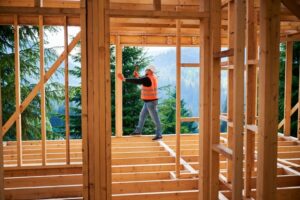The Housing Market’s Dynamic: A Closer Look at the 266K Homes Under Construction
In a striking development for the U.S. housing market, builders currently have a staggering 266,000 homes either under construction or ready for sale, as noted by the U.S. Census Bureau. This figure marks the second-highest level of construction activity on record, following only the 2008 housing bubble. But what does this surge mean for prospective homebuyers and the overall real estate landscape?
Speculative Boom in Build-to-Sell Homes
Among the homes under construction, a notable trend has emerged: the rise of speculative homes. These are properties constructed without confirmed buyers—often referred to as “spec” homes. Currently, the nation is witnessing 124,000 spec units, representing a significant recovery from the severe shortages observed between 2012 and 2022. This level has not been seen since 2008 when builders reported nearly double that number.
Nick Gerli, CEO of Reventure App, voiced a refreshing point of view on this construction surge: “Builders are doing their part to inundate the housing market with supply.” His insights reveal an essential shift in strategies among builders trying to address demand imbalances in various regions.
Geographical Trends in Home Construction
The construction boom is particularly pronounced in Southern states like Texas, Florida, and Tennessee, which now boast a significant inventory of homes on builder lots. Here, active listings are returning to pre-pandemic levels, effectively alleviating previous local housing shortages.
Conversely, regions such as the Northeast and Midwest continue to struggle with inventory shortages relative to pre-pandemic standards. Builders are largely focusing their efforts on the South and the Mountain West, leaving Northern and Midwestern states to grapple with persistent deficits. As housing demand in these areas remains high, the disparity raises important questions about regional planning and investment.
Market Prices and Future Projections
Despite the influx of new homes, the market is seeing fluctuations in housing prices. According to Redfin data, the median home price reached $430,010 in November, a 5.4% increase from the previous year. Similarly, the total number of homes for sale grew by 10.3% year-over-year. However, as Gerli notes, a cooling buyer demand coincides with a run-up in builder inventory, suggesting that we may face a shift in value dynamics.
Reventure has forecasts indicating price declines in areas like Texas and Florida as early as 2025, particularly in suburban and rural locations where builder activity remains the highest. If you are a prospective investor or buyer, these insights are crucial for making informed decisions.
Underlying Economic Concerns
Amidst this bustling construction environment, there are underlying concerns that could affect the market’s stability. The Senate Budget Committee has issued a cautious report highlighting rising insurance premiums coupled with elevated home prices and mortgage rates as potential triggers for broader market instability. It serves as a reminder that while current construction trends may appear robust, external economic factors could reshape the landscape in unforeseen ways.
Conclusion: What This Means for Investors
For investors, the current market presents both opportunities and challenges. The increase in inventory can lead to better negotiation conditions for buyers, but the impending price drops in certain regions signal caution. Understanding the regional differences is essential. As always, informed investing boils down to staying ahead of market trends while paying close attention to macroeconomic pressures.
At Extreme Investor Network, we believe that the key to successful investing is to stay informed, and our community thrives on exchanging insights and strategies. Featuring actionable advice and exclusive content, we empower our members to make educated decisions in a fluctuating economic landscape. Keep a close eye on these housing trends, as they could provide the insights you need to thrive in the current market climate.

